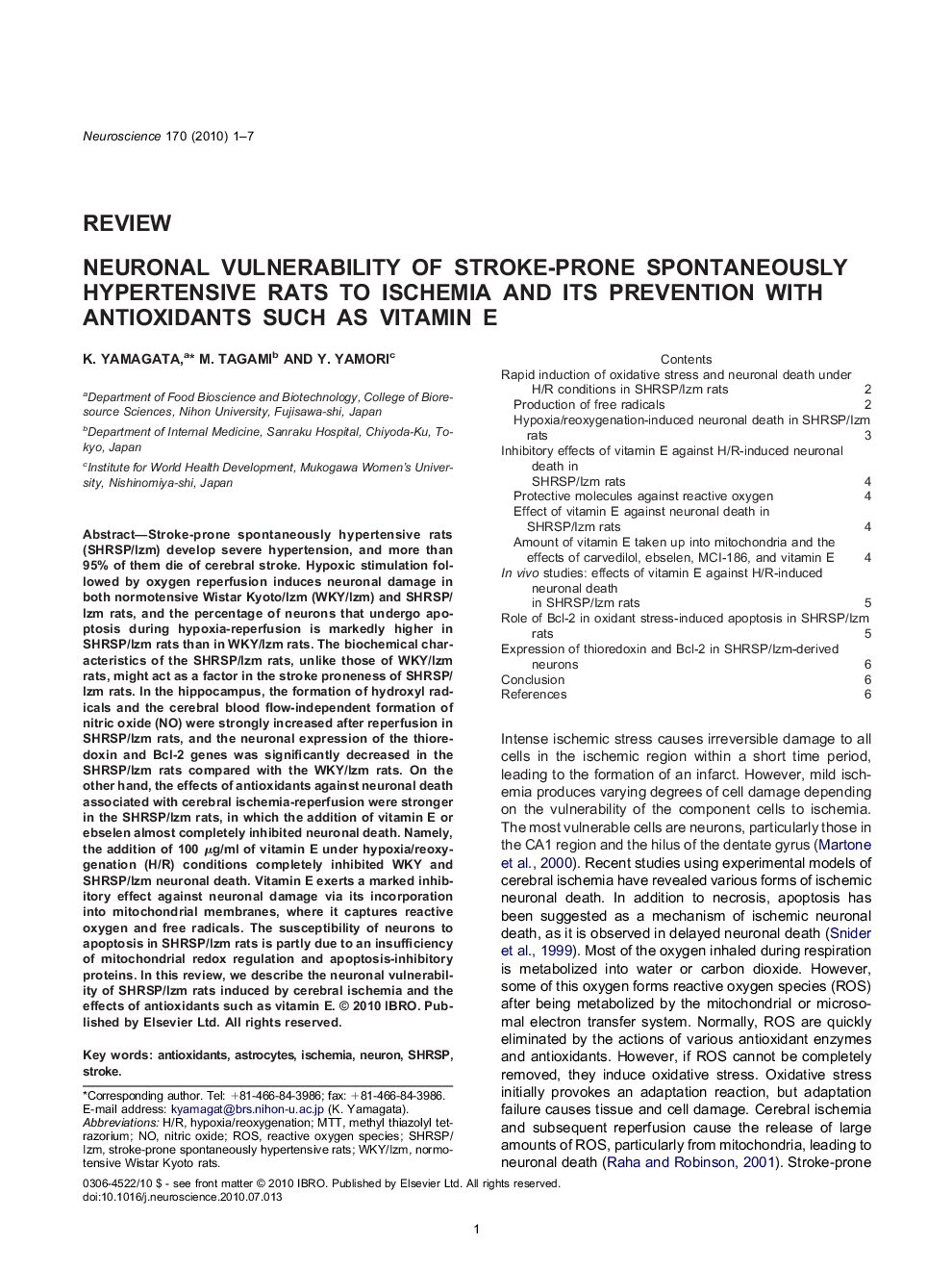| Article ID | Journal | Published Year | Pages | File Type |
|---|---|---|---|---|
| 6277168 | Neuroscience | 2010 | 7 Pages |
Abstract
Stroke-prone spontaneously hypertensive rats (SHRSP/Izm) develop severe hypertension, and more than 95% of them die of cerebral stroke. Hypoxic stimulation followed by oxygen reperfusion induces neuronal damage in both normotensive Wistar Kyoto/Izm (WKY/Izm) and SHRSP/Izm rats, and the percentage of neurons that undergo apoptosis during hypoxia-reperfusion is markedly higher in SHRSP/Izm rats than in WKY/Izm rats. The biochemical characteristics of the SHRSP/Izm rats, unlike those of WKY/Izm rats, might act as a factor in the stroke proneness of SHRSP/Izm rats. In the hippocampus, the formation of hydroxyl radicals and the cerebral blood flow-independent formation of nitric oxide (NO) were strongly increased after reperfusion in SHRSP/Izm rats, and the neuronal expression of the thioredoxin and Bcl-2 genes was significantly decreased in the SHRSP/Izm rats compared with the WKY/Izm rats. On the other hand, the effects of antioxidants against neuronal death associated with cerebral ischemia-reperfusion were stronger in the SHRSP/Izm rats, in which the addition of vitamin E or ebselen almost completely inhibited neuronal death. Namely, the addition of 100 μg/ml of vitamin E under hypoxia/reoxygenation (H/R) conditions completely inhibited WKY and SHRSP/Izm neuronal death. Vitamin E exerts a marked inhibitory effect against neuronal damage via its incorporation into mitochondrial membranes, where it captures reactive oxygen and free radicals. The susceptibility of neurons to apoptosis in SHRSP/Izm rats is partly due to an insufficiency of mitochondrial redox regulation and apoptosis-inhibitory proteins. In this review, we describe the neuronal vulnerability of SHRSP/Izm rats induced by cerebral ischemia and the effects of antioxidants such as vitamin E.
Keywords
Related Topics
Life Sciences
Neuroscience
Neuroscience (General)
Authors
K. Yamagata, M. Tagami, Y. Yamori,
